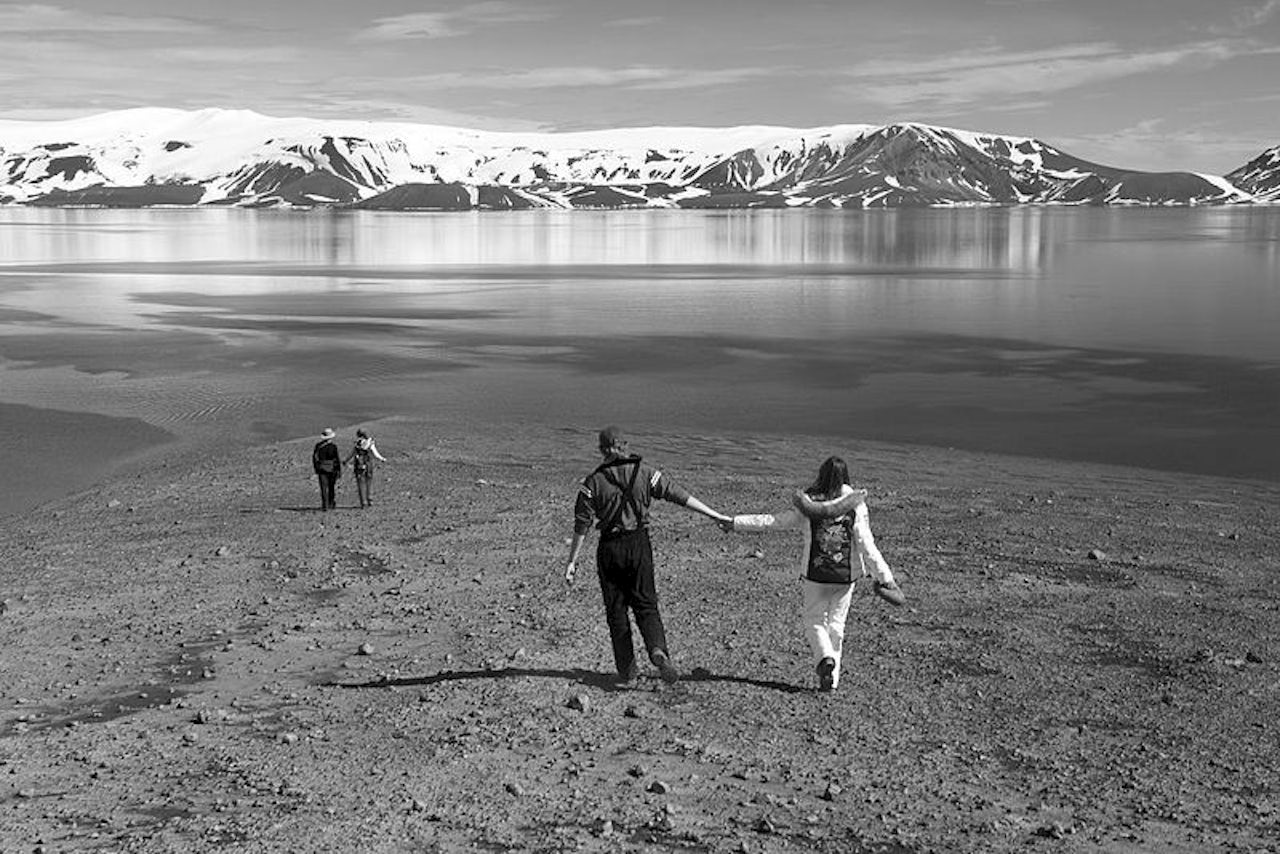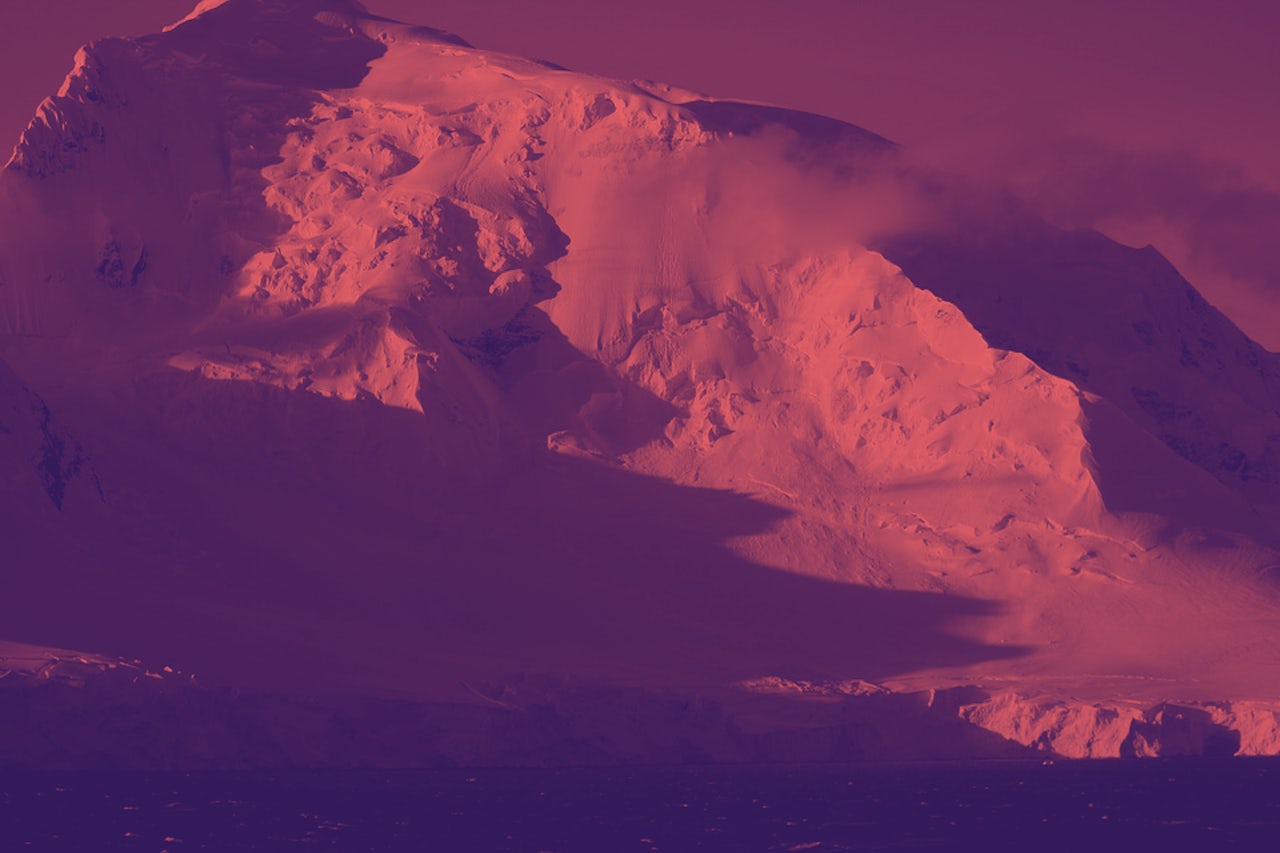“Join our team on this special voyage that equips leaders with resources and actionable solutions to become a part of a global force of change.” This isn’t the description for Doctors Without Borders. It’s for a luxury Antarctic vacation expedition through the company Explorer’s Passage.
Its “Climate Force: Antarctica” vacation package offers the “Leadership on the Edge” program, which incorporates “glaciology, geography, and wildlife” lectures, as well as lessons in “writing, presentation, and public-speaking skills.”
But the “Climate Force” package is clearly a vacation. It’s on a luxury cruise ship whose prices range between $10,995 and $19,095 per person. Customers can sail from Argentina or Chile to the Antarctic Peninsula, where they have the option of partaking in mountaineering, hiking yoga, kayaking, paddleboarding, a “Polar Plunge” on the frozen continent. The ship also has a smoothie bar, private gym, "His & Hers saunas," heated saltwater pool and a spa that offers “the exclusive Explorer’s treatment, and signature VOYA hand and foot rituals.”
“By joining the ClimateForce: Antarctica 2018 expedition you become part of a vast global movement of change leaders from across the planet,” the Explorer’s Package website reads. “With thousands of Climate Force/IAE alumni in over 100 countries, you will have access to a diverse set of ideas, resources, and connections. You will begin your life long Climate Force journey on this special expedition.”
The threat to Antarctica is real. Due to global air circulation patterns, Antarctica is warming faster than most other places on the planet. For species that are highly specialized to very specific conditions — such as penguins, fish, and krill — these environmental changes have played a role in declining populations in recent years.
But to companies like Explorer’s Passage, and dozens of other companies, this threat and fragility is very marketable. Abercrombie & Kent offers “inspiring” cruises to Antarctica ranging from $11,995 to $185,000 a head. Polar Cruises advertises a journey to the “untouched interior of this last great wilderness” starting at $35,000 and rising to $84,000. Lindblad Expeditions — founded by “father of ecotourism” Lars-Eric Lindbland — offers “one of the most exhilarating adventures on Earth” ranging from $13,890 to $30,960.
A trip to Antarctica is presented like a limited-time-offer.
There are tons of luxury cruise packages, but what’s unique about cruises to Antarctica is that the marketing language is largely rooted in social and environmental righteousness. They market the trip as an adventure, and the customer as an explorer. And when companies like Explorer’s Passage couple that with the language of environmental catastrophe, a trip to Antarctica is presented like a limited-time-offer.
The marketing language works. During the winter of 1991 to 1992 — which is summer for Antarctica, and therefore, tourist season — just 6,400 people visited the frozen continent. Compare that to winter of 2016 to 2017: over 44,300 people went.
Many Antarctic tourists claim that they were originally attracted to Antarctica because of their interest in climate change and conservation. One example is 39-year-old Billy Ching, who I spoke with via Reddit messenger. On a post in the subreddit r/antarctica, Ching claimed to have visited Antarctica three years ago.
“I'm a bit of an adventure/explorer,” Ching told me. “Most people who choose to go to Antarctica have seen a lot of the world. They are interested in learning about new places and the environment and they have a strong sense of preservation and conservation.”
Debra Corbeil of ThePlanetD.com, who travelled to Antarctica with her husband Dave in 2014, told The Outline in an email that Antarctica offers some of the most incredible wildlife experiences on the planet.
“Penguins would walk up to us and peck at our coats, leopard seals would watch us with interest as we kayaked beside them sleeping lazily on ice floes.”
“Penguins would walk up to us and peck at our coats, leopard seals would watch us with interest as we kayaked beside them sleeping lazily on ice flows and whales surfaced beside our kayaks and zodiacs for a closer look,” Corbeil said. “Antarctica is filled with life and layers of colour and beauty.”
However, people present an inherent risk to a Antarctica. They could bring invasive seeds or microbes in their clothes or hair, which could compete with existing Antarctic species and compromise the ecosystem. Trash and waste that aren’t properly disposed also present significant environmental risk.
Per the Antarctic Treaty of 1959, no country can own sovereign territory on the continent — legally, that casts the regulation of tourist activity into the private sphere. In 1991, this lead the formation of the International Association of Antarctica Tour Operators (IAATO) whose stated goal is not to advocate for Antarctic tourism, but to regulate Antarctic tourism and ensure the environment is protected.
According to Amanda Lynnes, a spokesperson for the IAATO, only one tourist ship can be ashore at any given moment; there can’t be more than 100 people outside the ship; and there has to be one guide for every 20 tourists. There is specific protocol for cleaning clothing and equipment that might carry invasive species, and for disposing of waste away from the Antarctic shoreline. Unlike in the American West, which is at risk of irreparable damage due to a radical surge in visitors thanks in part to the Instagram opportunities, visitors to Antarctica are still always under close supervision.
“Violating IAATO regulations is rare, thankfully!” Lynnes said in an email. “Should a violation occur, we have a compliance and disputes process that will include external stakeholders, such as [Antarctic] Treaty Party Competent Authorities, if necessary.”
But according to Michael Hall, a professor of marketing at the University of Canterbury in New Zealand who has written about sustainable tourism in Antarctica, the IAATO cannot eliminate all of risks tourism presents to the Antarctic environment.
“What is likely to increasingly become an issue is going to be the cumulative effects of tourism,” Hall said in an email. “Even if individual visits are as light as possible, they all still add up.”
Many cruise lines include on-board scientists to educate their customers about the fragility of their surroundings. However, some simply use this as justification to refer to their customers as “ambassadors” of the Antarctic—in other words, people who can advocate on behalf of Antarctica in the context of climate change. “It’s really just marketing-speak by commercial organisations that need to make a return and want to assure their customers that they are contributing to some greater cause by travelling to the Antarctic,” Hall said in an email.
Gary Lee, a professor of environment, society, and design at the University of Canterbury, said that there is no evidence proving that tourists who go to Antarctica engage in climate advocacy inspired by their vacation.
“This is not to say that many people who travel to Antarctica do not support protection and maintenance of the Antarctic environment,” Lee said in an email. “However, people who make the effort — and pay the money — to go to the ice are usually well disposed to support such initiatives before they make the trip.”
In an effort to bolster the idea of ambassadorship some cruise lines take tourists to McMurdo Island to meet the scientists and contractors working at McMurdo Station, which is run by the US Antarctic Program. Glenn has 20 years of experience as a science support contractor for McMurdo and is an active member of r/Antarctica. He told The Outline generally supports tourism trips to the continent.
“Antarctica is stunning, and it's impossible to fully appreciate it without seeing it firsthand,” Glenn said. “Very few people come away unmoved.”
However, he was not without reservations.
“The cruise ships that visit the Antarctic Peninsula seem to get bigger every year, and there's more of them,” Glenn said. “There simply isn't enough infrastructure in Antarctica to deal with a major ship disaster other than sending out a mayday call and hoping someone can respond.”
Emergencies in Antarctica are no joke. Just last month, the “Polar Star” ship narrowly avoided catastrophe. The ship was on its way back to New Zealand after delivering supplies to US researchers in Antarctica when it experienced a gas turbine failure and severe leak. Ice-cold water flooded into the ship at a rate of 20 gallons per minute. Luckily, the crew was able to seal off the leak, but they were completely on their own.
There are restrictions on heavy fuel use in Antarctica, which offsets some environmental risks attached with an oil spill, and many companies such as Hurtigruten emphasize hybrid technology on their luxury ships.
But the risk for human life cannot be completely eliminated. The Polar Star was a US Coast Guard ship specifically designed to break through ice. While expedition ships such as the Ocean Adventurer boast an “ice strengthened hull,” other companies provide little information about their ship’s durability and ice-resistance.
Yet the Antarctic tourists that I spoke to did not seem to feel unsafe or concerned about their safety during their cruise, or the possibility of an environmental catastrophe at the end of the world. Bob Jenkins, who travelled to Antarctica in 2013, the “undeveloped” nature of the Antarctic landscape was in fact a draw.
“It seemed to me that most of the passengers were like me in simply wanting to see a part of the world so different from where we each lived,” Jenkins said.
Similarly, Debra Corbeil told The Outline that she and Dave went to Antarctica for the experience of encountering an untouched landscape—and, of course, of being on all seven continents.
According to Amanda Lynnes from the IAATO, rates of Antarctic tourism are set to reach a historic high in the next year or two. Antarctic tourism is usually influenced by a country’s GDP and by environmental restrictions—such as the ban of heavy oil in Antarctic waters, which negatively affected tourism numbers after its enactment in 2011. But Lynnes said that the number of tourists in the region has been increasing each year, especially from emerging markets such as China, which sent 5,286 tourists to the continent in the 2016 to 2017 season, according to an IAATO fact sheet. The international demand has been so great that the IAATO has even had to enact new regulations, such as banning the use of drones on Antarctica.
“People want to visit Antarctica—which can have great benefits if done safely and responsibly,” Lynnes said. “But balancing an increasing desire to visit with the obligations required to protect this extraordinary wilderness is an important challenge to meet head on.”
But the Antarctic that exists today won’t be the Antarctica that exists tomorrow. According to research published by NASA last month, 1,929 gigatons (which is one billion tons) of continental ice was lost in 2015, and the melting isn’t expected to stop.
Antarctic tourism could arguably be classified as a “climate leadership journey,” as stated on the Explorer’s Passage’s Climate Force website. But it could also be classified as “last chance tourism,” whose value is driven by the environment’s own mortality.




